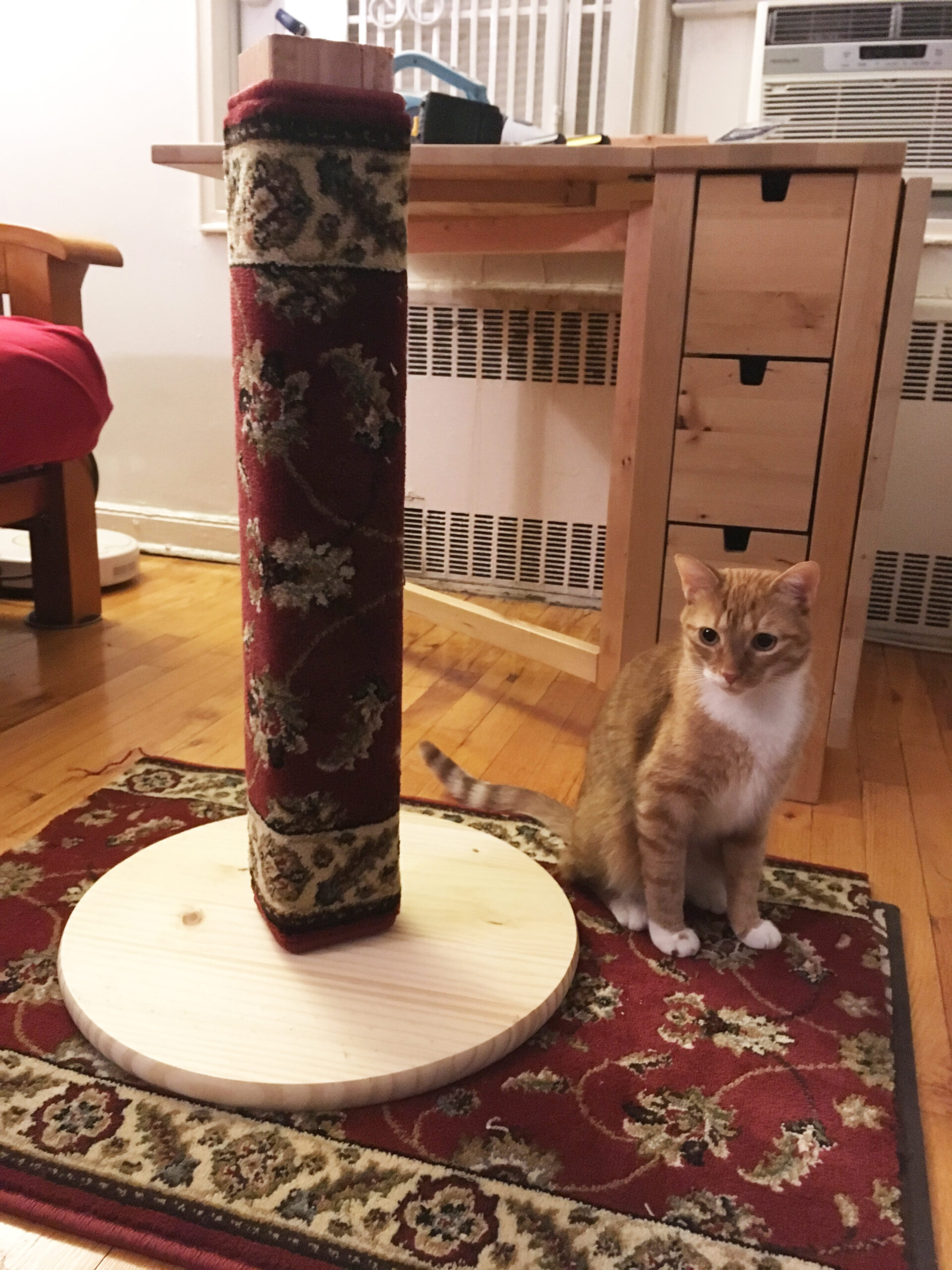


Over the years, I have wasted a lot of money on cat accessories that turned out to be junk. Sure, every cat owner dreams of bringing home one of those three-tiered, carpeted towers with adorable cubbyholes for the fur babies to play in. But what you can’t see in the picture is how easy it is for an overenthusiastic jump to send the entire habitat crashing to the floor, while your cat scrambles away terrified, silently vowing to never go near that thing again.
Even something as simple as a scratching post can be unsturdy, too short, and/or too expensive. Essentially, these things are just carpeting attached to a wooden or cardboard post—so why is it so hard to find a good one at a decent price? With limited options in the store, my husband and I set out to build our own.
For our first try, we simply attached a wooden post (a leftover bit of 4×4 that Home Depot gave us for free) to a wooden base ($4). The cats love it, and it’s held up for a year or two now, but it’s getting a little worn out. For this latest one, we decided to get fancy and add a bit of carpet. Here’s how we did it.
Project Stats
Time: 2 hours
Cost: ~$10
Difficulty: Easy
Tools
Drill
Staple gun or glue
Hammer
Box cutter or scissors
Materials

Wooden post. Cats like to be able to stretch while they scratch, so make sure the post is longer than your cat. I used a 4×4 that’s 27 inches long.
Wooden base. This should be heavy enough to support the post. I found a nice round piece at the hardware store for $4, but plywood may work as well. You’ll probably want it to be at least 16 inches square.
Two 3-inch wood screws
Carpet (optional). I used less than 1 square foot of a carpet runner to cover just the vertical post. Avoid carpets with a loop pile, which can unravel quickly when a cat scratches.
Padding (optional). If you have hardwood floors, you’re probably going to want to cushion the bottom of the wooden base. I used adhesive felt pads, but another option would be to hot-glue any leftover carpeting to the bottom of the base.











